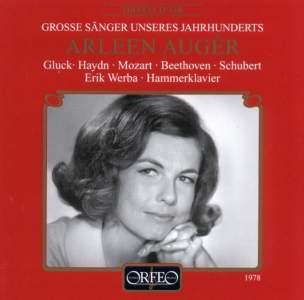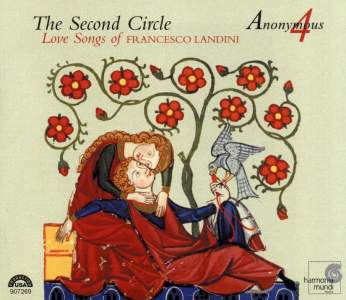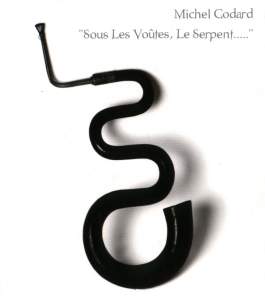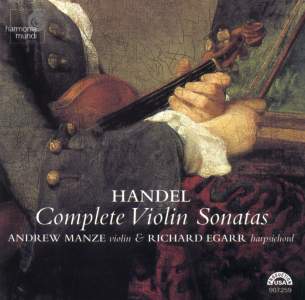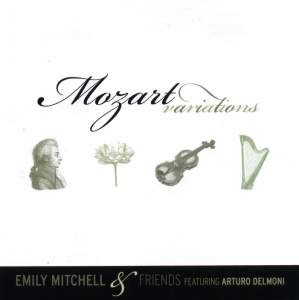Music Reviews
Classical Music - Part 30 - November, 2001
Jason Serinus
Ratings: Extraordinary Good Acceptable Mediocre Poor
HANDEL: COMPLETE VIOLIN SONATAS - ANDREW MANZE (VIOLIN), RICHARD EGARR (HARPSICHORD) - HARMONIA MUNDI HMU 907259
Performance:
Sonics:"Perhaps the sonata was but a toy theatre in Handel's world of architectural splendors. Nevertheless, the characters which wordlessly inhabit its stage are no less lifelike, no more an illusion, than the many heroes and heroines who people the operas and oratorios."
So writes baroque violin virtuoso Andrew Manze in the liner notes to this recording of the "complete" violin sonatas by G. F. Handel. Whether Handel wrote all of these sonatas remains unclear - only five out of the disc's eight complete sonatas, plus two stand-alone movements, can be authenticated. Nor can we verify if the composer heard them performed solely by violin and harpsichord, without a cello doubling the bass line as commonly practiced in modern, "historically authentic" performance. What is certain, however, is that the Gramophone award-winning team of Manze and Egarr has created another potential award winner.
This music is vital, alive and thrilling. These artists understand that baroque composers expected musicians to improvise, fleshing out and ornamenting the written line. The results, a reflection of the highest musical imagination, make for splendid listening. A high point is the first selection, the 12 minute Sonata in D major, Op.1 No. 13, HWV 371, whose gentle opening movement is filled with beauty.
Manze plays with incredible panache, alternating soulful movements with others filled with joy and brio. The sound of his violin, made in 1782 by Joseph Gagliano, offers an intriguing blend of sweetness tinged with a touch of metal. As paired with Egarr's sonorous instrument, a copy John Phillips of a 1707 harpsichord by Nicolas Dumont, the colors prove irresistible. Not even the addition of too much unnatural reverb can sabotage this triumph.
ARLEEN AUG�R: LIEDERABEND - ORFEO C 509 011 BPerformance:
Sonics:Soprano Arleen Aug�r's 1988 Love Songs disc (Delos 3029) is one of the great vocal recitals of the digital age. Recorded two years after Aug�r's internationally televised performance at the wedding of Princess Di and Prince Charles, and five years before her tragic death of brain cancer, its songs by Aaron Copland, Frederick Lowe, Franz Schubert, Benjamin Britten, Francis Poulenc, Fernando Obradors, Richard Strauss, Robert Schumann, Noel Coward and many others offer the artist at her creamy, mature best.
In 1978, when the Los Angeles-born singer was 38, she performed a "Music in the Sound of Its Time" recital in the historic Rittersall of the Salzburg Residenz. Aug�r's voice at the time still retained the youthful freedom and heart-tugging iridescence that made her 1967 Vienna Staatsoper debut as Queen of the Night in Mozart's The Magic Flute such a sensation. The results are wondrous.
Accompanied by Erik Werba on a clunky-sounding Hammerfl�gel built by Anton Walter, whose instruments Mozart liked to play, Aug�r's voice is so luminous, her ease of emission and comfort with singing so extraordinary, that even if she had simply sung the notes as written, the recording would be most welcome. But Aug�r does far more than just sing notes. From the first selection, a rather simple-minded aria by Gluck, Aug�r rounds off her phrases with a caring and sense of concentration that indicate a special intelligence at work. Turning to four contrasting selections by Joseph Haydn, two of which are sung in English, her ability to convey a wide variety of emotions consistently impresses. A standout is the soprano's rendition of "She never told her love the deeply moving way in which she alters her expression when repeating Shakespeare;s phrase "sighing with grief" the mark of a major artist.
Thirteen additional selections by Mozart, four by Beethoven, and five by Schubert offer a variety of expression and nuance that explain why Aug�r's voice graced over 180 recordings. When a song such as Schubert's "Heidenr�slein" or "Seligkeit" calls for joy, Aug�r delivers. And when it calls for an intimate expression of love, such as Schubert's great "N�he des Geliebten," or for sadness, such as Beethoven's "Wonne der Wehmut" (both to words by Goethe), the depth of feeling, combined with Aug�r's prized radiance, make for an extraordinary listening experience.
If you love song enough to live with a recital that offers neither texts nor translations, this rare document, recorded live in stereo with realistic presence, is a must.
THE SECOND CIRCLE: LOVE SONGS OF FRANCESCO LANDINI - ANONYMOUS 4- HARMONIA MUNDI HMU 907269Performance:
Sonics:A warm welcome to the latest recording from Anonymous 4, the gifted American a cappella women's quartet that specializes in medieval repertoire. Ever since their initial releases, An English Ladymass and the award-winning On Yoolis Night, Anonymous 4 has distinguished themselves by exquisite singing whose purity of tone makes ancient repertoire come alive. Even though one of their members has changed, the beauty and quality remain.
This time, Anonymous 4 turns its attention to Francesco Landini (1335-1397). Born in Florence, Landini transcended his childhood blindness from smallpox to master singing, play several instruments, and eventually become the chief musician of the church of San Lorenzo for over 30 years. Francesco was also a poet, and wrote some, if not most of the texts to his very personal, two- and three-voice polyphonic love songs. Written in what Dante called the dolce stil nuovo (sweet new style), the beauty of Landini's gorgeous, sensual songs serves as a healing balm in these troubled times.
VIVA VIVALDI! - CECILIA BARTOLI - IL GIARDINO ARMONICO - DVD VIDEO - ARTHAUS MUSIK 100229
Performance:
Video:
Sonics:This wonderfully produced surround sound DVD conveys all of the excitement and awesome musicianship that make mezzo soprano Cecilia Bartoli's performances so thrilling. Captured live in September 2000 at the Th��tre des Champs-�lys�es, the all-Vivaldi performance finds the mezzo and her supporting Il Giardino Armonico original instrument ensemble in stunning form.
Much has been written about Bartoli's unique coloratura technique, wealth of vocal color, interpretive insights, and infectious energy. Her gifts have only ripened as she has reached her thirties. The voice, though still relatively small, now carries much farther, and the range has expanded to encompass both the deep tones of the mezzo and the soaring freedom of a soprano. This vocal maturation has been accompanied by a deepening artistry that places her among the exalted greats of vocal history.
In the long-forgotten scores of Antonio Vivaldi (1678-1741), Bartoli has found music whose expressive range is a perfect match for her creative genius. One aria in particular, "Armatae face" from Juditha Triumphans, is an absolute wonder. Calling upon the Furies to rise from their "dark and dreadful kingdom" and achieve vengeance "with the lash, with death and slaughter," Bartoli vocally and visually transforms into a raging woman. As if one were watching a movie special effect, Bartoli's face becomes wild, the hair disheveled, as she bites into her low range and spits out the text with a vehemence that is matched by her peerless technique and gorgeous voice.
In striking contrast, softer, more inward arias such as "Domine Deus" from Gloria allow the mezzo to produce one of the most gentle, heartfelt, extended legatos one is ever likely to hear from a human throat.
Il Giardino Armonico proves a perfect match for the mezzo's artistry. Conductor Giovanni Antonini is as visual as Bartoli, his lithe body swaying and dancing with the music. The combination is unbeatable.
Here are two highly recommended discs from small audiophile labels. Because these recordings may prove harder to find, website information is included.
MOZART VARIATIONS - EMILY MITCHELL & FRIENDS FEATURING ARTURO DELMONI -JOHN MARKS RECORDS JMR 24 --- http://www.jmrcds.comPerformance:
Sonics:
This delightful disc open with Emily Mitchell's unique 28-minute harp arrangement of Mozart's own string quartet version of his Piano Concerto No. 12 in A, K. 414. My first reaction, upon hearing the accompanying quartet's thin, music box sound, was to wonder if this was a reissue of an old '78. But as soon as Mitchell's harp entered, I heard sounds so full and beautifully articulated that I knew I was on the doorstep of audiophile heaven.
Captured unnaturally close, in an acoustic that unites the harp's rich resonance with the detail of every finger touch, Mitchell's delicacy, shadings, and sensitivity make for rewarding listening. Given first violinist Arturo Delmoni's tendency to produce thin, occasionally wiry sounds, the quartet's placement in the background on the first selection is all for the good.
Mitchell, known from the many folk music recordings for RCA Victor which feature her singing and accompanying herself on Celtic harp, has assembled a winning program. In addition to a first recording of Mozart's Piano Concerto arrangement, the disc includes a harp adaptation of Mozart's Piano Fantasy in D minor, K. 397; John Thomas' harp version of Mozart's Rondo Pastorale; Mikhail Glinka's Variations on a theme of Mozart from Don Giovanni; and a first recording of the restored performing edition of Louis Spohr's Sonata in D for Harp and Violin, Op. 114, whose second movement is based on themes from Mozart's The Magic Flute. Each selection is more delightful than the last, the entire program enchanting as either serious, sit down listening or background music.
Delmoni's playing provides the one thorn in an otherwise rosy project. It is sometimes not up to par, with at least one wince-inciting, clumsily articulated passage in Spohr's Sonata. But Mitchell's musicianship is so good, her sound so seductive, and the music itself so charming that you are bound to find the disc an irresistible treat.
MICHEL GODARD: SOUS LES V�UTES, LE SERPENT - M.A RECORDINGS M048A --- http://ww.marecordings.com/Performance:
Sonics:This fascinating, impossible-to-classify recording spotlights the serpent, a valveless ancestor of the modern day tuba. The snake-like instrument, which dates from 1590, features a wood mouthpiece that is partly responsible for its deep, primal sound. Played by Michel Godard, the serpent is featured on mostly original compositions recorded in a resonant Spanish monastery. All this helps create an otherworldly, time-suspending experience of mind-expanding dimensions.
French tuba player Michel Godard, who arranged four of the disc's nine tracks, began playing the serpent in 1979. He has since become one of the world's leading exponents of the instrument. In addition to his modern tuba playing with numerous French orchestras and chamber ensembles, Godard plays with a plethora of international instrumentalists, as well as with his own ensemble.
Joining Godard is Linda Bsiri, who variously sings and plays trumpet marine on a number of tracks; Mark Nauseef, who plays percussion on all tracks and composed five of them (one with Bsiri); and Pedro Estevan, who adds percussion on three tracks. Percussion, as unusual as the spotlighted instrument, includes gongs, bells, and Tibetan singing bowls.
The disc begins with music from the era of the serpent's emergence, as everyone plays instruments on Godard's wordless arrangement of the traditional plainchant "Victimae Paschali Laudes." From there, the music journeys to mystical realms that one can only pretend to describe.
Part of this album's success is due to the genius behind M.A recordings. Established in Japan in the spring of 1988, the MA label is known for recordings of unusual, frequently impossible to classify music captured in acoustic settings that emphasize an almost mystical sense of expanse and space. Many of MA's musicians are from Central and South America, although some hail from the Middle East, Southern Siberia, Macedonia, and other exotic locales. MA's digital recordings, in this case recorded at a 96 kHz sampling rate, are produced with only two omni-directional microphones, with signals fed through exotic audio cabling into handmade and customized recording equipment designed specifically for the label. The results are extraordinary.
- Jason Serinus -� Copyright 2001 Secrets of Home Theater & High Fidelity
Return to Table of Contents for this Issue.

